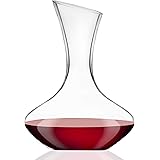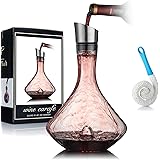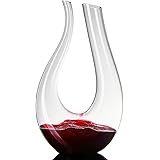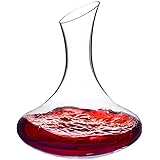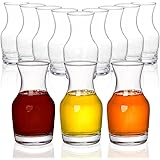Are you tired of hearing the same old stories about Rosé wine? Perhaps you believe it’s just a fleeting trend, a simple summer sipper that lacks complexity or history. Many wine enthusiasts and casual drinkers alike hold common misconceptions about this beloved pink beverage, often overlooking its rich heritage and incredible versatility. But what if we told you that the true story of Rosé, especially from its birthplace in Provence, France, is far more ancient, sophisticated, and exciting than you ever imagined?
Indeed, the video above takes you on an incredible journey through Provence, the heartland of the world’s finest Rosé. It’s time to cast aside those outdated notions and discover why a visit to this stunning region, and a deep dive into its signature wine, is an absolute must. From ancient Greek origins to the modern-day “Rosé All Day” phenomenon, we’re here to unveil the real essence of Provence Rosé, proving it’s so much more than meets the eye.
Provence Rosé: An Ancient Legacy, Not a Modern Fad
One of the most enduring myths about Rosé is that it’s a recent invention, a product of modern marketing or, as the narrator playfully suggests, “invented by millennials.” However, the truth paints a much older, more profound picture. Imagine this: nearly 2,600 years ago, in the 6th century BC, Greek colonists landed in what is now Marseille, then known as Massalia. These early settlers brought with them not only their culture but also their grapevines. This makes Provence the oldest wine region in France, a true cradle of winemaking.
These ancient vintners weren’t producing the deep red wines we know today. Instead, their methods involved quickly pressing grapes with minimal skin contact. This process naturally resulted in a pinkish-hued wine—the very first iteration of Rosé. So, next time you enjoy a glass of Provence Rosé, consider that you’re tasting a tradition that dates back millennia, a practice continued through Roman times when the region earned its name, “Provincia Nostra,” meaning “Our Province.”
Unveiling the Unique Terroir of Provence
Provence is not just steeped in history; its unique geography and climate are perfectly sculpted for creating exceptional Rosé wines. Stretching along the dazzling southeast coast of France, known as the French Riviera or Cote d’Azur, the region boasts an incredible diversity of landscapes. From dramatic mountain ranges and rolling hills to sheltered valleys and sun-drenched coastlines, the terrain is as varied as it is beautiful.
The soils here are typically nutrient-poor and well-draining, with limestone dominating the west and crystalline schist in the east. While this might sound like a challenge, it actually benefits the vines immensely. The lack of readily available nutrients forces the grapevines to “stress,” digging deeper into the earth for water and minerals. This stress leads to smaller, more concentrated grapes, bursting with flavor and complexity. Imagine the struggle of these vines, yet how beautifully it contributes to the character of the wine in your glass!
Beyond the soil, another invisible but incredibly powerful element shapes Provence’s wines: the Mistral winds. These strong, dry winds sweep down from the Rhone Valley, performing a crucial role in preventing disease and grape rot by keeping humidity levels low. Furthermore, they clear the skies, ensuring the region basks in an abundance of sunshine—nearly 2,900 hours per year. This constant sunshine and dry air create an ideal environment for ripening grapes while maintaining their vibrant acidity, a hallmark of fine Provence Rosé.
The Dominance of Côtes de Provence and its Varied Expressions
Provence is home to several important wine regions, or AOCs (Appellation d’Origine Contrôlée). While Coteaux d’Aix-en-Provence and Coteaux Varois en Provence produce excellent wines, the undisputed champion is the Côtes de Provence. This renowned region accounts for an astounding 75% of all wine produced in Provence, translating to approximately 130 million bottles annually.
Within the Côtes de Provence, an impressive 90% of the wine made is Rosé. This highlights the region’s unparalleled dedication and expertise in crafting this specific wine style. While specific sub-regions like Cassis are celebrated for their whites and Bandol for robust reds, these are notable exceptions. The vast majority of winemakers here focus on perfecting the art of Rosé, often blending indigenous grape varieties such as Grenache, Cinsault, Syrah, Mourvèdre, and Tibouren to achieve their signature pale pink hues and delicate aromas of red berries, citrus, and floral notes.
Busting Rosé Myths: Beyond the Aperitif
The video shares a compelling encounter with Jean-Francois, a scion of the legendary Domaine Ott, whose family has been making wine for over 120 years. He perfectly encapsulates the shift in perception regarding Rosé. Many people, even seasoned wine drinkers, often assume Rosé is merely an aperitif wine—something light to sip before a meal. But this couldn’t be further from the truth.
Contrasting this common belief, Jean-Francois demonstrates Rosé’s incredible versatility as a food pairing wine. Picture this: a clean, fresh Rosé, with its refreshing acidity and subtle weight, beautifully complementing a delicate ceviche or a perfectly grilled piece of salmon. Unlike some heavier red or lighter white wines, Rosé occupies a unique space, making it an ideal companion for “in-between” dishes. It pairs wonderfully with meaty fish, hearty salads like tomato salad, and even mildly spicy foods. Its crispness cuts through richness, while its fruit profile harmonizes with a range of flavors.
Moreover, the myth that Rosé should always be drunk young is elegantly debunked by a tasting of a 2009 Domaine Ott Étoile. This aged Rosé, with its unique amphora-shaped bottle—a design created by the Ott family to distinguish their Provence wines—reveals a complexity and depth that only time can impart. Imagine enjoying a bottle of Rosé that has evolved over more than a decade, showcasing tertiary notes alongside its vibrant fruit, proving its capacity for graceful aging.
The Provençal Lifestyle: Serenity and Sophistication
Provence is not just about wine; it’s about a lifestyle. While places like Saint-Tropez might conjure images of celebrities, luxury villas, and million-dollar yachts, the true essence of Provence is far more nuanced. It’s a place where the vibrant energy of the French Riviera meets a profound sense of serenity and tranquility. Imagine wandering through old-world villages tucked into hills, discovering breathtaking valleys, and relaxing on dozens of stunning beaches, each more beautiful than the last. The region even celebrates its famous lavender with annual festivals, adding another layer of sensory delight.
The “Rosé All Day” mantra in America often conjures a “Hollywood firecracker pink lifestyle.” However, in Provence, it’s a calm, contemplative affair. It’s about savoring fresh, local food—like the narrator and Jean-Francois discuss, the Provençal diet emphasizes fresh ingredients, contributing to a lean, healthy lifestyle even amidst delicious indulgence. It’s about appreciating the light that inspired masters like Van Gogh and Picasso. This region truly encapsulates a specific feeling, a serene elegance, captured perfectly in a glass of its signature Rosé wine.
So, as you explore the world of wine, remember that Provence Rosé offers an experience unlike any other. It’s an ancient tradition, a product of a unique land, and a versatile partner for culinary adventures. It invites you to embrace a lifestyle of beauty, history, and tranquil enjoyment, far beyond any fleeting trend.



